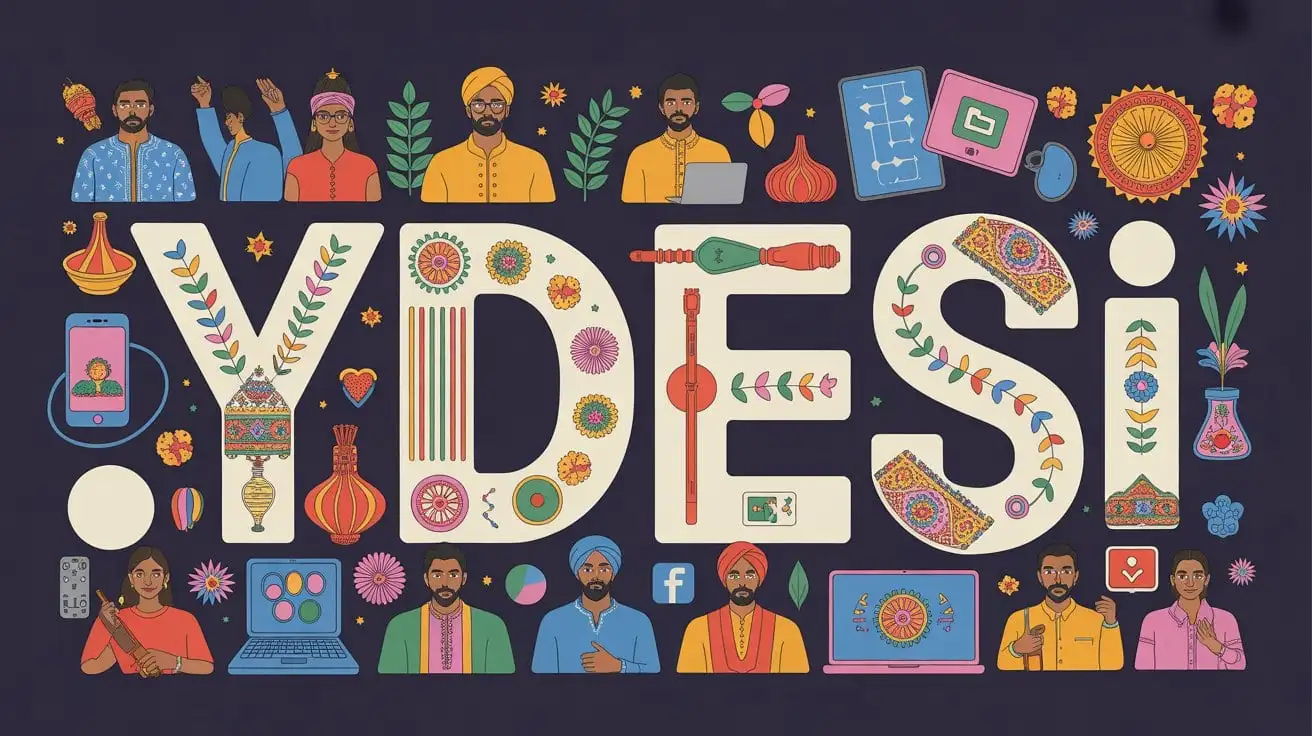The term .ydesi has gained curiosity and attention in recent times as it appears across different platforms, discussions, and searches. At first glance, the word may seem unusual or abstract, but behind it lies an identity marker that connects culture, technology, and modern communication. Understanding what it stands for is important for those exploring online communities, digital branding, or simply trying to decode the context in which it appears.
In its essence, it combines the suffix “desi,” often associated with South Asian roots, culture, and diaspora identity, with a digital or symbolic prefix. This makes it more than just a keyword — it becomes an identifier that bridges traditional heritage with modern digital expression.
Exploring its meaning helps uncover why so many people resonate with it and how it can be applied across cultural, social, and professional contexts. The deeper we look into this identity marker, the more we realize that it is not just a word but a lens through which heritage and modernity merge.
Understanding the meaning of .ydesi
At its core, the familiar word “desi” refers to people from the Indian subcontinent and their shared cultural practices. It is a term of belonging, nostalgia, and community. The addition of the dot before it gives a digital twist, resembling domain extensions, hashtags, or identity markers used across the internet.
In simple terms, .ydesi represents a blend of heritage and technology. It signals that someone identifies with the “desi” culture but also embraces modern digital spaces. This makes it unique because it connects offline traditions with online presence.
By using it, individuals and communities can express pride in their cultural roots while also signaling adaptability in global digital ecosystems.
Why it matters today
The relevance of this cultural expression lies in its dual role. On one side, it safeguards an identity that millions of people across the globe cherish. On the other, it provides a modern twist that aligns with today’s digital-first communication.
In an age where online identity defines personal branding, usernames, and social engagement, having something that carries cultural value is powerful. This becomes a tool for representation, allowing people to stand out while still staying connected to their roots.
Its importance is amplified by the growing South Asian diaspora worldwide. Communities living away from their home countries often seek meaningful ways to express who they are, and this simple yet powerful identifier offers exactly that.
Benefits of using .ydesi
One of the biggest advantages of adopting this term is identity affirmation. It gives individuals a way to proudly highlight their heritage in a modern digital form. People using it often feel connected to their community even when living across continents.
Another benefit is branding. Whether it is used in usernames, blogs, or digital projects, it instantly conveys a cultural and modern appeal. For businesses targeting South Asian communities, it becomes a keyword that connects emotionally with the audience.
Additionally, it builds inclusivity. It invites people who share the same cultural values into a common space, fostering a sense of belonging and togetherness. This becomes especially important in multicultural settings where identity markers strengthen community bonds.
Challenges linked to .ydesi
Despite its benefits, this identifier comes with challenges that cannot be ignored. One key issue is misunderstanding. Not everyone instantly relates to the meaning of the word, which can sometimes create confusion in communication.
Another challenge is overuse or misinterpretation. Since the term looks like a digital extension, it can be mistaken for a domain name, a technical code, or even a random string of characters. Without context, its cultural value might get diluted.
A third challenge is accessibility. People who do not identify with South Asian heritage may not fully appreciate the emotional significance, which may limit its wider adoption.
Real-world applications
The use of this cultural term has already been observed in multiple scenarios, from social media handles to digital art projects. For example, influencers often use it in their usernames to signal their cultural roots to their audience.
Entrepreneurs have also experimented with the term, using it as a branding choice for websites, stores, and community-driven platforms. This reflects the commercial and cultural strength embedded within the keyword.
In creative spaces, it has been used as part of hashtags, online campaigns, and identity-focused projects. It has become a shorthand way of saying, “I am desi, and I am proud of it,” in the digital world.
Step-by-step guide to using it effectively
To make the most of this identity marker, it is important to use it with clarity and purpose. First, understand the context in which you want to apply it — personal branding, cultural expression, or community building.
Second, decide on the platform. If you are using it as a username or digital tag, make sure it aligns with your online presence. For businesses, the choice should connect naturally with your target audience.
Finally, always provide context. Because not everyone may understand its meaning right away, adding a short description or explanation can make your use more effective and inclusive.
The cultural symbolism
Beyond digital usage, this keyword carries a symbolic weight. It tells a story of identity preservation in an age where traditions risk being overshadowed by globalization. By integrating the old with the new, it reminds us that culture evolves but never disappears.
For the South Asian diaspora, it becomes a marker of unity. For younger generations born outside their ancestral homelands, this word helps bridge the gap between their modern lifestyles and inherited traditions.
This symbolism makes it more than a trendy term — it becomes an emblem of resilience, adaptability, and pride.
Future of .ydesi in digital identity
Looking ahead, this term could play an even bigger role in shaping digital identity. With growing interest in unique and meaningful usernames, domain names, and brand identities, words like it will only gain more visibility.
If nurtured carefully, it can become a global cultural tag, representing not just identity but also creativity and innovation. It may even evolve into a recognized digital extension for South Asian-focused platforms or initiatives.
By embracing it today, communities set the foundation for its broader adoption tomorrow.
FAQs about .ydesi
What does .ydesi mean?
It refers to a blend of South Asian cultural identity (desi) and modern digital expression. It connects heritage with online identity.
Why is .ydesi important?
It allows individuals and communities to showcase cultural pride while also aligning with the digital-first world.
Can businesses use .ydesi?
Yes, businesses targeting South Asian audiences can adopt it for branding and marketing to connect emotionally with customers.
Is .ydesi a domain extension?
Not officially. It resembles one but functions more as a cultural and digital identity marker.
Who uses .ydesi most?
Mostly individuals from the South Asian diaspora and those involved in cultural or creative online communities.
Will .ydesi become more popular in the future?
Yes, with increasing digital adoption and global cultural awareness, it is likely to become more widely recognized.
Conclusion
The story of .ydesi is one of heritage meeting modernity. It captures the essence of being rooted in tradition while thriving in a global digital world. By using it, individuals, businesses, and communities can strengthen identity, foster inclusivity, and build connections across borders.
Now is the right time to embrace it, not only as a word but as a symbol of cultural pride and digital relevance. Whether you are an individual shaping your online presence or a business seeking meaningful branding, this cultural keyword offers you a bridge between the old and the new.


